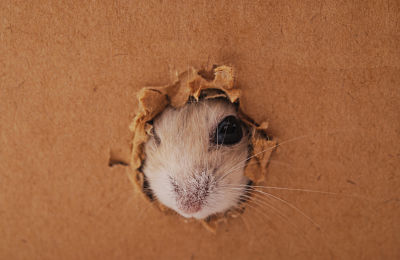
Our first guest post of the year comes to you from Leeds estate agent Dwell who are sharing their expertise on acquiring a HMO licence.
As costs of rent soar, Houses in Multiple Location (HMOs) are becoming more popular.
Rather than the traditional transaction of a landlord letting out their whole property to a group of people (often a couple or family) who pay for the whole house together, HMOs see individual tenants renting out single rooms only on a person by person basis.
This allows for more affordable rent for tenants, and a greater profit margin for the landlord.
That being said, the popularity among landlords of converting houses into HMOs has come under some criticism, especially in regards to the health and safety of unrelated tenants who live together. As a response to this, government regulations have been introduced for landlords who want to convert their property into an HMO and lease it out to five people or more.
HMOs with five tenants or more are legally described as “Large HMOs”
Failing to meet these requirements can result in fines of up to £25,000 and can see a landlord potentially getting a criminal record. To help avoid these dire consequences, here is a breakdown of the regulations surrounding Large HMOs and how you can make sure that you are compliant.
HMO Licencing

The most recent changes to licencing laws surrounding Large HMOs occured in October 2018.
To qualify for a Large HMO licence, your property needs to meet certain requirements that allow for tenants to live in an acceptable degree of safety and decency. This includes, but is not limited to the following:
- Any bedroom that is rented out needs to be at least 6.51m2 or 10.22m2 if two people are living in it. If the tenant is under 10 years old, the minimum room size is 4.64 metres squared.
- The property needs to have enough toilets, washing facilities, and cooking facilities.
- The property needs to have a waste disposal provision (bin collection).
- Interlinked smoke alarm and fire alarm systems.
- Gas safety and electrical safety checks need to be carried out every 5 years and be kept in date.
- Enhanced fire safety measures including clearly laid out fire exits and a written fire safety plan in the building.
Large HMO licence applications can be made through your local council. Your property will be inspected by several different organisational bodies before you qualify.
The granting of a licence will always come under the discretion of the council. Harder to quantify factors such as the general condition and cleanliness of the property may also be considered.
Fit and Proper Persons Test
An application for an HMO Licence also involves a fit and proper person’s test for the landlord.
If you do not have a criminal record, or any sort of criminal history, this should be a formality. The most common factors that cause landlords to fail fit and proper persons tests are:
- Unspent convictions related to fraud or financial crime, violent crime, or sexual crime.
- A previous offence related to discrimination.
- A previous offence related to housing or tenant law.
Fit and proper person’s tests are judged on a case by case basis and are designed to ensure that a landlord will not exploit their position of power for financial or personal gain, or will use their property to facilitate criminal behaviour.
What This Means for Landlords and Buyers
Most landlords and investors who want to rent their property out as an HMO do so because they believe that it will provide a better ROI than traditional buy-to-let. While this is often true, it’s important to take into account additional expenses that may accrue when making your property eligible for a licence.
Some of these expenses occur when ensuring that your property passes the health and safety regulations. This can include the installation of fire doors, the addition of fire hydrants and blankets, and replacing wiring. Overheads are typically higher in HMO’s than in buy-to-let properties as HMO’s usually include bills and higher maintenance costs.
In Article 4 areas, there is also a requirement for planning permission (C4) if you intend to rent your property to 3 (not 5) or more unrelated tenants.
If you are buying a house with the purpose of renting it out as an HMO, you should measure up all the rooms to make sure that you can legally rent them out as single and/or double rooms. This is particularly important if you are looking to buy a “1930s” house as they typically have a small “box” room. Such rooms won’t be large enough to be rented out as a bedroom.
Bear in mind that a dedicated communal living space is not a requirement for a Large HMO, so living rooms can be converted into bedrooms if you so wish. You should also ensure the kitchen is large enough to accommodate the required number of tenants.
What About HMOs With Less Than 5 Tenants?
There are no nationally enforced licencing laws for HMOs with less than 5 tenants. Rather the rules vary from local council to local council. Regardless of this, landlords should give strong consideration to fire safety measures such as fire doors and interlinked smoke detection for smaller HMO’s.
HMO regulation is increasing over time, and this pattern is expected to continue into the future.
Requirements generally fall in line with Large HMOs, so it’s recommended that you follow these rules regardless of the number of tenants you have. In general, if you want your HMO investment to be as passive as possible, it is best to provide the required amenities as an absolute minimum in order to avoid tenant churn.
Is it Possible to Lose Your HMO Licence?
An HMO licence acts as an agreement that the landlord will stick to the terms on which the licence was initially approved. It is therefore the landlords responsibility to keep their property to the standard required and failing to do so can see you lose your licence.
If you are caught revoking the terms of your licence, you will face a fine and will be asked to make any required changes within a certain time frame in order to retain your licence. Failure to make these changes in the specified time frame will then see your licence revoked. Again, this decision is made on a case by case basis.
HMO licences can also be lost due to poor behaviour of your tenant(s). This can include criminal or anti-social behaviour. As with any type of buy-to-let arrangement, you should always vet potential tenants. This is especially important with HMOs because losing your licence could make it more difficult to get approved for a licence in the future.
Licences are valid for 5 years. In the final 18 months of your current licence you should begin your application for a new one. It is your responsibility to do this, and failing to do so can see you suffering the same punishment as having an unlicensed HMO. This can include a fine of up to £20,000, an inability to apply for future HMO licences, and getting a criminal record.
Guest blog supplied by Oli Watson of Dwell Estate and Letting agents Leeds.



